#guide's craft
Text
The summonings for residents of the Infinite Realms are constant. Across space and time they do not change. They require the same strokes in the sigil from past to present and the same breaths needed to chant from one edge of the universe to another.
Danny has always liked this as it has allowed him to see many wonders of history. And to visit many alien planets. He has met all sorts of people and experienced all sorts of events. But he has never experienced something like this. This time, he is summoned to a dying world. The planet exploding as its core devours itself. This time he is faced with two desperate parents pleading for him to save their son. But he can't. Living beings cannot be taken back through the summons. All Danny can do, is promise to guide their son to safety.
#dp x dc#dc x dp#dpxdc#dcxdp#winter's tales#danny guides a baby kal-el to earth where he knows he'll be safe#does he intentionally leave him with the kents?#or do they just happen to stumble upon the craft as he's deciding what to do next?#does danny remain a constant figure in clark's life?#or does he silently check in on the boy from time to time?#that's up to you
681 notes
·
View notes
Text

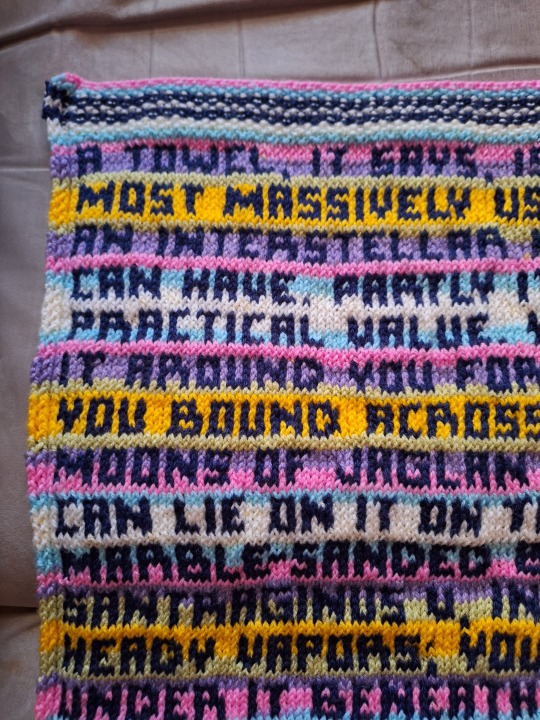
Very proud of the newest Hitchhiker's Guide Towel, and was so excited to get the commission for an older project to give it new life.
Now they can always know where their towel is, lol.
Use code JUSTBECAUSE for 20% off your order!
Check out the shop: https://teashopcrafts.bigcartel.com/
#tea shop crafts#the tea shop#knitting#knit#hitchhikers guide#douglas adams#towel#towel day#the hitchhiker's guide to the galaxy#towel quote
717 notes
·
View notes
Text

pov: eon tries to explain why eating a star was a good idea,
[eon design by @the-bitter-ocean]
bonus:

#the consequences of your actions#in stars and time#isat#isat spoilers#a6se spoilers#isat odile#isat loop#odile loops au#set in: bonnie loops; eon and loop as guides#''look if wish craft trapped us in the loops then wish craft is the way to get out of it. the logic tracks. the loops going over-#to boniface; was in fact; not supposed to happen;''#loop beefing with eon will never be not funny to me#day 85#That's probably enough eon for now; back to working on asks
260 notes
·
View notes
Text

Suggested Reading
Threshold Theory
Energy Work Fundamentals
The Subtle Body
Spell Design
Spell Dictation
Sigils: How-to
Intro to Gnosis
Anchors

What is a Spell Circle?
Spell circles, while they aren’t necessary, are a tool that is used as a focal point for a working. They are also very helpful in aiding in headspace via the implementation of aesthetics. Spell circles are technically hypersigils, or a complex sigil that is typically constructed of multiple sigils in tandem. They are typically constructed of three parts: Incantations, foundations, and root sigils. They are used in a ritual format, typically with each practitioner having a standardized approach to using them for spell work.
How do they work?
A spell circle is similar to a sigil in the way that there is an incorporation of intention, energy, passion, and focus in their creation. Spell circles operate most effectively within the energetic model or something adjacent. The psychological model will be entirely ineffective; at least as I have prescribed their creation in this article. They often contain sigils as well as some other elements that serve to connect the circle to the overall working. These elements include incantations, words, phrases, symbology, geometric/organic designs, numerology, etc.
Incantations, words, or phrases can be said out loud as part of the working (provided that doing so doesn’t break gnosis), or written out and burned into ash and incorporated into the working through that process. Though they can also be incorporated in other ways as well. As an example, you could write a song and record it and have the tablature or staff wrapped around the perimeter of the spell circle. You could then listen to the song while casting your spell using it as a centerpoint of your gnosis.
The other elements of a spell circle are used to enhance the threshold of the root sigil or purpose. Each additional element adds a node, or correspondence, to the threshold of the spell. Doing so helps refine the accuracy and potency of the working.
Designing a Spell Circle
If you have experience working with sigils, then designing a spell circle can be pretty easy. I highly recommend using programs like procreate to make these, or drafting tools! Freehanding them can be quite difficult without any experience with technical drawing. I use my tablet to draw them digitally and then trace them onto a burnable substrate such as paper.
Incantation(s)
An incantation is a phrase that is said that astutely states the intent of the spell. It is important to have this memorized, if you use them. Without having them memorized, using them will pull you out of gnosis by disturbing your focus. Incantations are like the thread that binds the spell circle to the rest of the working, especially if you use other tools, sigils, etc. When I construct my spell circles, I use the pronunciation of my sigils as the incantation, which are all aspects of a conlang that I developed. This can be seen as a sigil chain. So long as the incantation is written somewhere on or near the circle, then it is capable of being connected to the burning of those sigils via the incantation. I find that having the incantation encircle the root sigil is the most aesthetically pleasing for me.
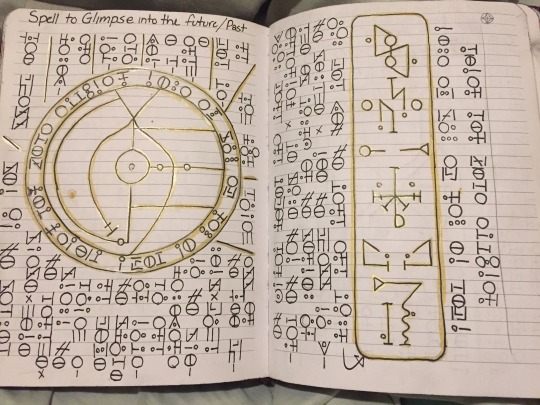

Root Sigil
This is a sigil that is at the core of the circle. It should represent the base goal of the spell. This sigil is connected to the rest of the circle via the Foundation(s). Like all sigils, it is important that it is drawn while channeling its meaning through your mental state, emotions, and subtle body to be most effective.To create them, I will draw the enclosing circle first before drawing a grid within it. This grid is then used to ensure that the root sigil is centered and scaled appropriately. The sigil is always the first part that I draw. Here are a few examples of sigils I have used for spell circles:

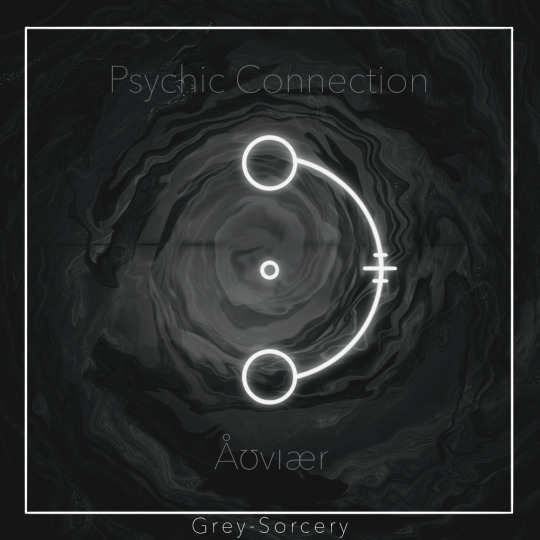
Foundation(s)
Foundations are simple designs that each have their own correspondences. Some foundations use numerology to derive their meaning, others are given their meanings based on how they interact with the root. The foundation(s) used should also align with the purpose of the spell; but more specifically, to describe the means of manifestation of the spell to some degree. They can also be used to expand the context of the root sigil, ex. Whether it is intended to be a blessing or curse. I am always sure that when I draw them in the grid, that they appear to be a part of the sigil, yet also behind it by having the lines stop and continue any shapes that are a part of the sigil, like circles, triangles, and squares. Here are a few foundations that I use:

Associative Symbology
These symbols are things I don't really implement in spell circles myself, but include things such as astrological symbols, alchemical symbols, magical alphabets, color, and imagery. These symbols are typically incorporated in equal distribution around the circle in radial fashion, but can also be used in other configurations. The number of symbols can be implemented with numerology in mind as well. Colored line-work can also be used to further the correspondences. Imagery such as pictographs can also be used, following similar implementation as other symbols.

Applications
Spell Circles can be used for all sorts of workings, typically in a ritualistic fashion. However, they may also be used as passive sigils, meaning that they are placed and affect a specified space gradually over time. If they are used in this fashion, they will need to be revisited and charged periodically. When using a spell circle in a ritual, place them underneath the central spell elements such as cauldrons, candles, bowls, etc. Please use discernment. Fire safety is of the utmost importance. Once the spell is in motion, use the incantation that connects the circle to the working. I highly recommend rehearsing your incantation until it is memorized so that your spell’s effectiveness isn’t hindered. I highly recommend placing a spell anchor onto your spell circle as well so that there is a direct medium holding it. This way the spell can be recharged, broken, or altered as necessary.
Ritual Closing & Disposal
As part of closing any working, it is important to close off all energy that is connected to the working other than the anchor. Part of this is disposing of the spell circle in a responsible manner. This can be through responsibly burning it and burning the ashes, burying the spell circle itself (Provided it is on a biodegradable medium), soaking it in water to dissolve the ink and then cleansing the medium, or if it is drawn on a dry-erase board you can just erase it and cleanse it. When burying the ashes of your working, try to use your discretion as to which direction it is buried relative to your sleeping place or place of casting.
Identifying a Spell Circle
A few popular designs for spell circles have been misidentified in the past, specifically those of John Dee, who was a prolific cryptographer. These designs have a lot of the hallmarks of spell circles; however, they are enclosed with 72 latin letters, which don’t have any magical or mystical correspondences, but are very common in encryption wheels, and then are encoded through biblical reference. The influence his work had was very substantial in the development of spell circles and their design. While his encryption circles can be used for magic, like any other design drawn through intention, passion, and gnosis, it is obvious that it was not intended as such given the historical context of his life.
Interested in my other articles? You can find my masterpost here.
Patron Shoutouts!
Megan Kipp
Jinsu
Thank you for your continued support! My patrons help me maintain the drive to create content and help me keep food in my pantry.
My patrons of Mystic tier and higher had access to this article a week before it was public! To see other perks of supporting me, click here!
#informational post#spellwork#spellcraft#spell casting#spell craft#spell circle#witchcraft#witchcraft resource#witchcraft guide#ritual#beginner witch#sigil#sigil creator#energy work#sigil magic
685 notes
·
View notes
Photo
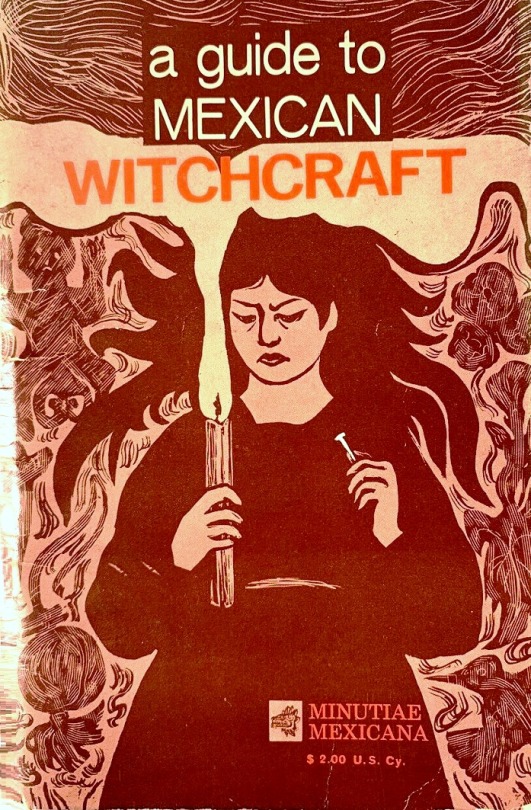
William and Claudia Madsen - A guide to Mexican Witchcraft - Minutiae Mexicana - 1969
#witches#crafts#occult#vintage#a guide to mexican witchcraft#minutiae mexicana#minutiae mexicanae#minutiae#william and claudia madsen#william madsen#claudia madsen#1969#candles
468 notes
·
View notes
Text
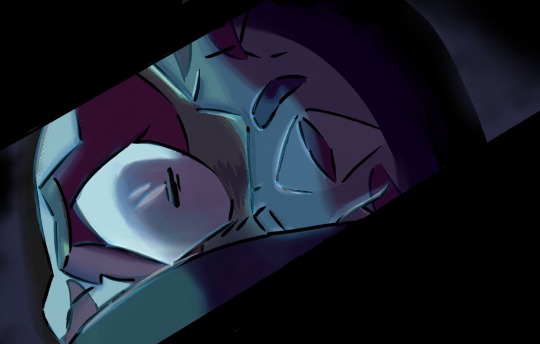
this image by @callmehere-iwillappear is living in my head rent free so i had to draw my interpretation of it
#tarts&crafts#my art#rottmnt#rise of the teenage mutant ninja turtles#digital art#rise of the tmnt#rise fanart#rottmnt fanart#tmnt#rise leo#idiots guide
140 notes
·
View notes
Text
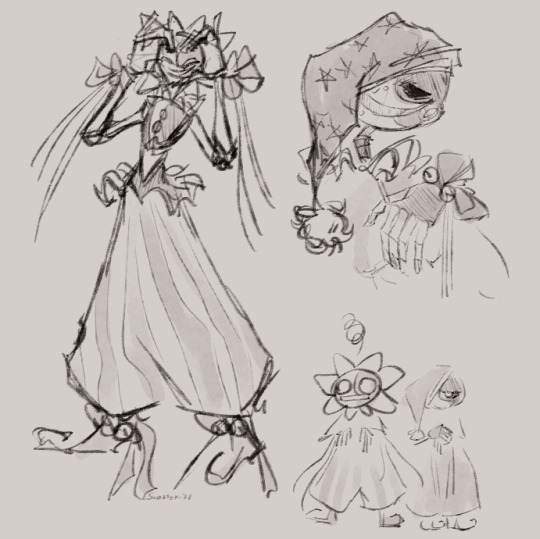
cartoon boing sound
#moondrop#sundrop#the daycare attendant#fnaf sb#fnaf security breach#fnaf#fnaf daycare attendant#confiteors arts and crafts#hey its my first post idk how their fandom works pspspspspps#can someone guide me thru pls#the daycare fandom
346 notes
·
View notes
Text
can the "finding your art style" discussion finally end because it does nothing but feeds people's insecurity and obsession with finding something... that they already have?
i've been there, trust me. growing up i was obsessed with "finding" my own art style. but you know what it only did? it made me almost quit drawing altogether on many occasions when in reality i already had one.
an art style is how you interpret everything around you through the act of creation. it's how you draw right now. it's how you place the lines. your line-weight. it's how you draw the eyes. it's how you shade.
an art style grows with you. it grows with your improvement. of course you can explore and bump it up by testing bits and pieces from art you love. but you don't add those bits to nothing. you add to what you already have, to the art style you already have. it's how you draw.
#lave talks#random ramble but i just saw another youtube video that's supposed to be a guide on how to find your art style#like dude. everyone who draws has an art style. everyone who writes has their own writing style#it will improve with you#it will grow with you#you can spice it up with things you like and enjoy. but it will always be there the second you pick up a pen#the refined art styles you see in experienced artists' portfolio is there because they've been drawing for decades and refined#what they already had. they polished their craft and their style followed. it will be the same with you. you just need to allow yourself#time for that growth#let's stop feeding into this idea that you don't have an art style until you do xyz#it almost ruined drawing for me#artist community#artists#artist#artist support#artist struggles#artist spotlight#art style#art tag#artists on tumblr#art discussion
55 notes
·
View notes
Text
Max might just be the most important character in El’s story arc
#which isnt to discount the importance of any other character#everyone has there place and cannot be removed or replaced#…but max is the most important one for els arc#if els story is about her discovering who she is as a person#max was the first one who led her in that direction#max was the first one who guided el towards the goal#until it was disrupted by vecna#and now el has experienced the loss of the mentor#and her final challenge will be crafting who she is as a person on her own without max’s guidance#also#elmax#el hopper#max mayfield#stranger things#stranger things analysis
263 notes
·
View notes
Text


BEHOLD! our only christmas decorations a whopping three days before the day itself! I was asked to draw a tree and so complied in the Smallest way possible - and threw in some Amateur Snowflakes for funsies
#im... still unsure how to make snowflakes#i followed Several guides! the craft eludes me#ive never been able to get them 'right'#but its fine! i like their chunkiness and theyre Something#which is better than nothing!#as you all can tell im not very. Precise lmao#photos from the bog
44 notes
·
View notes
Text
🥉 Three Elements for Writing the Setting of Your Story
🔑 The setting of a story is where and when your book happens. Your book setting is important because almost everything your character does will be affected by when and where they do them.
The three elements for how to write your story setting are time, location, and environment.
⌛ Time
Time is the when of your story. When thinking about your book, consider these when’s:
📅 What year? Your time period affects everything about your character. What clothes they wear, the technology and language they use, and their ability to move and interact in the world. A person in 1700 Europe isn’t going to use a cell phone to call someone, just like a person in 2023 United States isn’t going to speak Middle English.
🍁 What time of year? Is it winter, spring, summer, or fall? A character living in a Canadian winter isn’t going to spend time outdoors in a t-shirt and shorts. A person visiting Arizona in the middle of summer likely isn’t going to walk around in a jacket and jeans, no matter how stylish.
⌚ What time of day? This is more significant for scenes than the book as a whole. You can use the time of day to create a particular mood, such as nighttime for a feeling of danger or mystery. You should also consider the time of day for what your character is about to do. For example, someone likely isn’t going jewelry heisting at noon on a Monday.
⏳ Is time passing? Pay attention to how time is unfolding throughout your scenes and story as a whole. You have to account for any time that passes between scenes, when characters travel, or when you insert a flashback. Make sure your reader knows when your scene is happening, or they’ll be lost.
🗺️ Location
The location of your story is as broad as the country and region and as specific as the neighborhood or house. Like the time period, the location of your setting will affect your characters in all aspects of their lives: what they wear, how they speak, if they walk or drive or take the bus, etc.
If your book is fantasy, you will need to do some very detailed world-building work. A fantastic resource for this is The World Building Leviathan from Kittyspace.
🌲 Environment
The environment of your manuscript includes the physical world and social, political, and cultural influences of the time and location.
Take into consideration the environment’s climate and how it impacts your characters. For example, a character living in the tropics will have a vastly different life than someone living in the mountains of North Carolina.
What is the cultural, political, and social environment like in your character’s time period and hometown? These aspects can impact what your character believes in and the different values they hold dear. Societal norms vary across time and place, and it will take a lot of research to make sure you’re getting it right.
🙅♀️ Setting Don’ts
Newer authors often think they need a lot of exposition about the setting up front. This is called a “data dump,” and they are often very difficult to read. You don’t want to bore your readers with a lot of information about your world upfront. Rather, allow your setting to reveal itself slowly, either through your character or short bits of exposition throughout.
If you’re writing a fantasy or historical novel, avoid treating everyday objects as novelties. Even if that object is unique to you, it would not be unique to your character. If something is supposed to be ordinary to your character, treat it like it’s ordinary.
Check out jacquelynlscott.com for a free downloadable setting worksheet to help you think through the setting of your book or scene.
#writing community#writing advice#creative writing#writers#writing tips#writers craft#writblr#writers life#writer things#writers community#writers corner#writing corner#writing a novel#writing fiction#writing group#writing guide#writing goals#writing help#writing is a process#writing journey#writing motivation#writing major#writing novels#writing on tumblr#writing practice#writing tumblr#writing tropes#writing vibes#writing wise#writing writing writing
233 notes
·
View notes
Text
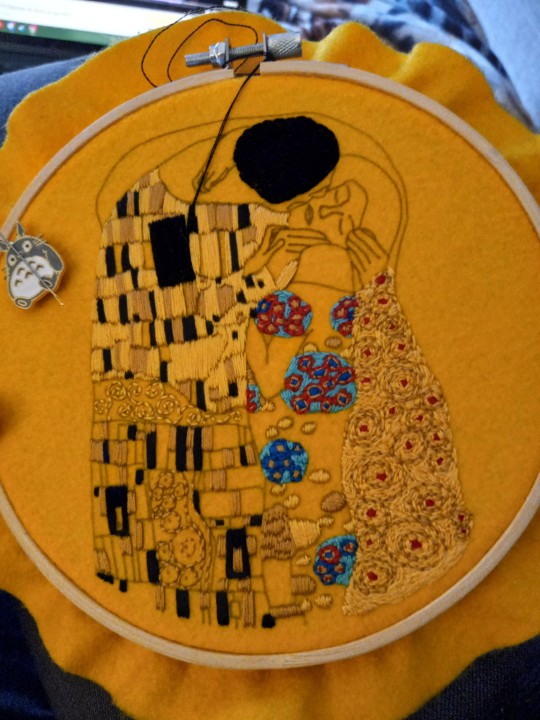
Crafting to stave off The Despair
#fran crafts#i mean ok maybe the subject matter just makes despair worse bc it is PINING#but i didnt think of that when i got the kit months ago#and it's part of a series on embroidering famous paintings#ngl i am not a fan of embroidering on felt. i prefer thicker weightier fabric#and the kit came with non dmc thread#which fine but you can TELL the difference and it doesnt sit as nice#for the rest of the series I'll probs just buy the user pdf guides#rather than the full kit#and supply my own materials#theres a few van gogh ones. a monet. largely impressionist works#but a few others too
34 notes
·
View notes
Text
I may not have CRAFT MERCH but I have a helpful mental health guide, and I can't wait to receive it in like 6 months because international shipping is really (the autofill literally said expensive cool yes) but i do this weird ping pong in which i send my aunt all the uk shipping cuz she lives there and then when i see her, she brings me the stuff. I see her ONCE every 3 years. It's worth it guys, i swear.
By the time i get the merch it's gonna be vintage

#I may not have craft merch#but i have a mental helth guide#dan howell#dan and phil#daniel howell#dnp#danhowell#I'm just playing the long game#not instant gratification#slow burn
21 notes
·
View notes
Text
Larger Towel Plans
Been toying with the idea of making another Hitchhiker's Guide Quote Towel with larger needles and thicker yarn to make it bigger. Which really isn't a hard decision, but can't figure out what colors I want to use, lol. This could take as long as it does to make it, at this point. Need more self striping yarn like this one, make the decision for me. :-P
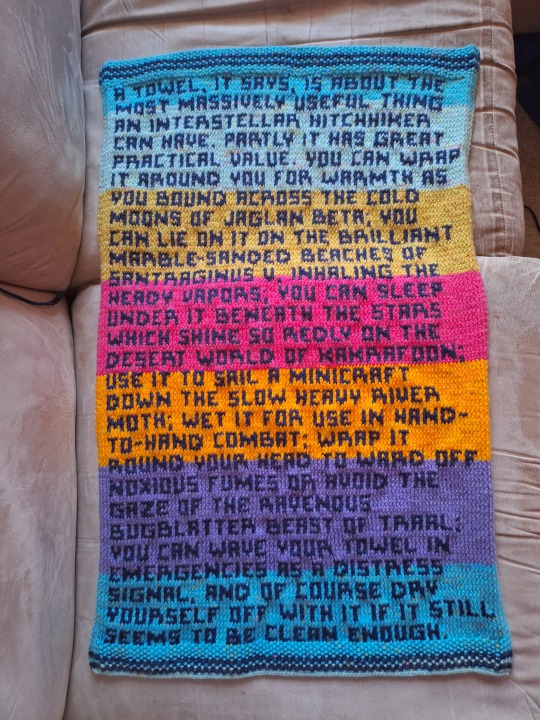
#the tea shop#tea shop crafts#text post#towel#hitchhikers guide#the hitchhiker's guide to the galaxy#knitting#knit#douglas adams
15 notes
·
View notes
Text
Want to build your own Piano Coat Rack?
I put together some plans for the Piano Coat Rack so that if anyone else wants to try to make one they have a starting point. I ended up putting them on itch.io for free since tumblr doesn't really like PDFs or zip files. The plans are free for non-commercial use. I also have a section describing some of the process to hopefully make it fairly easy to replicate.
I put these plans together in FreeCad, so along with a PDF version of the technical drawings there are also full 3D models that you can use to get a better understanding of how it goes together. If you notice any oddities or mistakes or have any question please just me up!
Also if you make one please tag me, I would love to see it!
Some Samples:

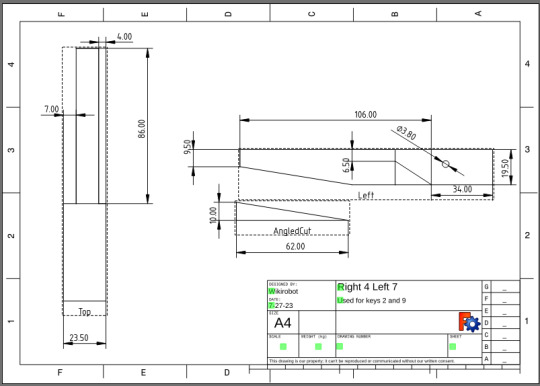
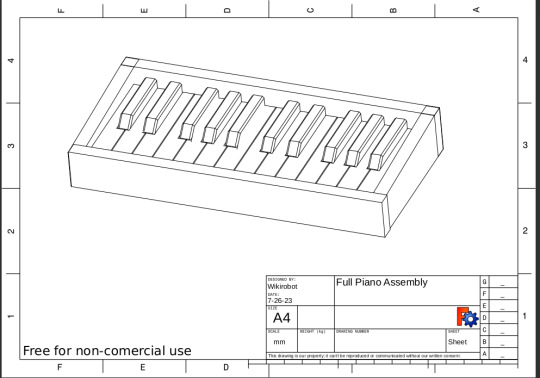
#woodworking#crafts#art#design#3d model#CAD#handtools#furniture#woodworking plans#technical drawings#piano#piano coat rack#sharing#free#hand tools#wood carving#plans#guides#finishing#maker#diy#freecad
60 notes
·
View notes
Text

Okay. So I wanted to do a one colour beads quilt and picked two different blacks. Once I laid it out I thought: wouldn’t it be cool to have one of the blocks be a white on white to stand out?
I sewed the single white block in and decided I liked it.
But then my little brother came by and saw it and went: You ruined it. That quilt top was perfect until you put that white block in.
And. I can see why he’d say that, he’s very much a more black then white guy. And I do still have the black block I replaced, so I could, if I wanted to, switch them back out.
But I really do like that singular white block. I even named the quilt “Guiding Light”.
So. I haven’t changed it out, but am considering it.
I mean, it would be easy enough to just whip up another one with two blues or two purples or something, the pattern is quick and easy.
#gay crafting#quilting#wip#patchwork#lap blanket#quilttop#black on black#guiding light#in consideration#beads by jordan fabrics#jordan fabrics pattern
24 notes
·
View notes